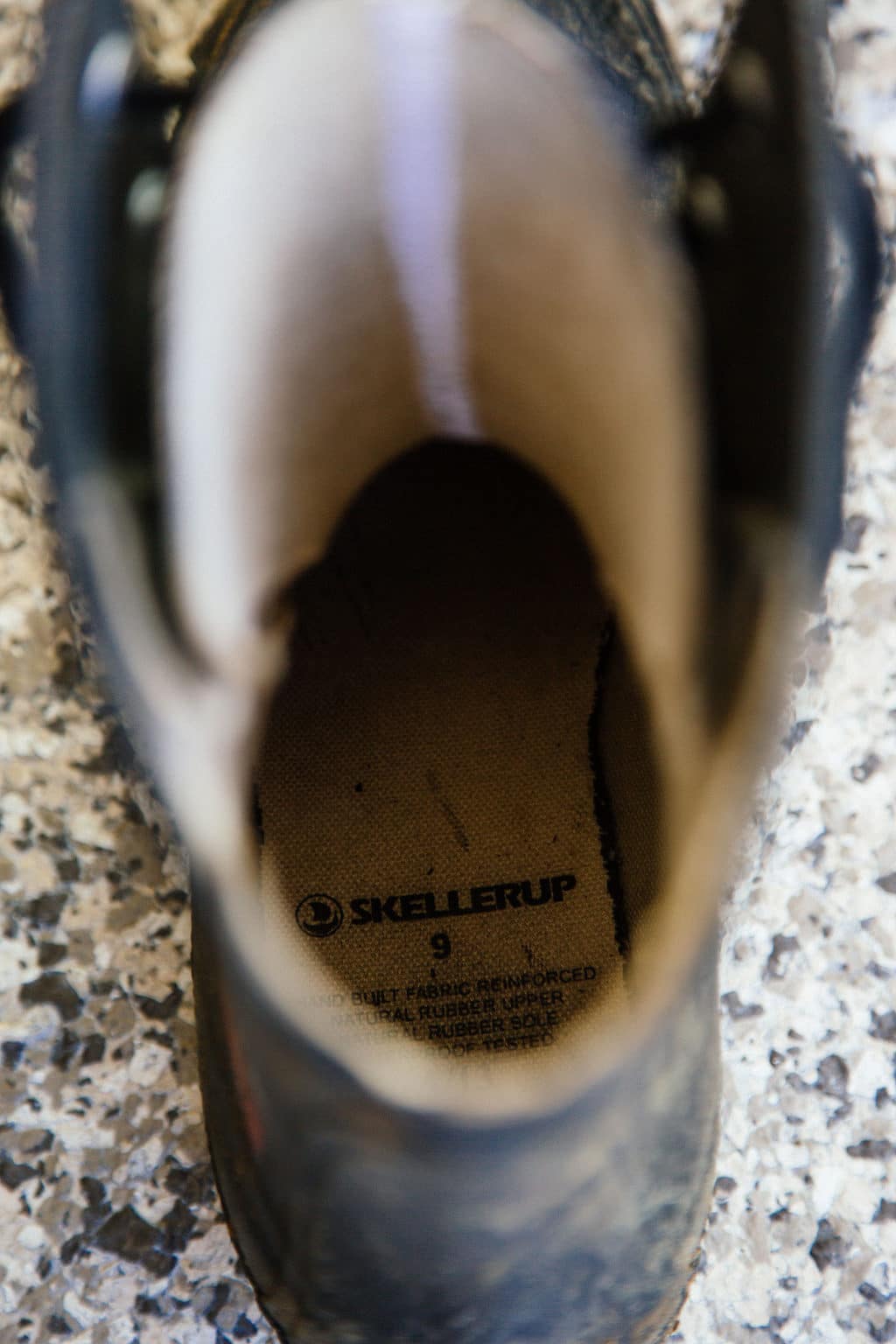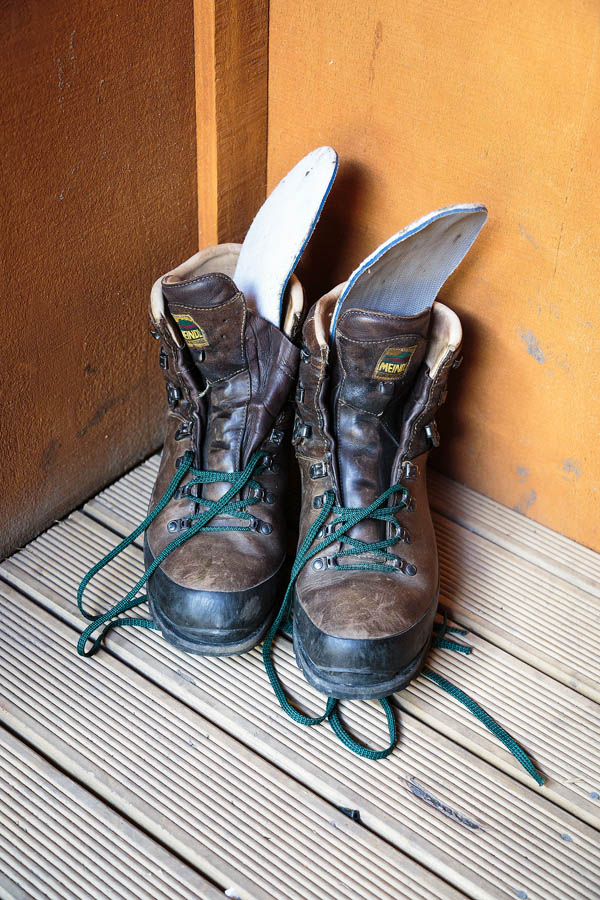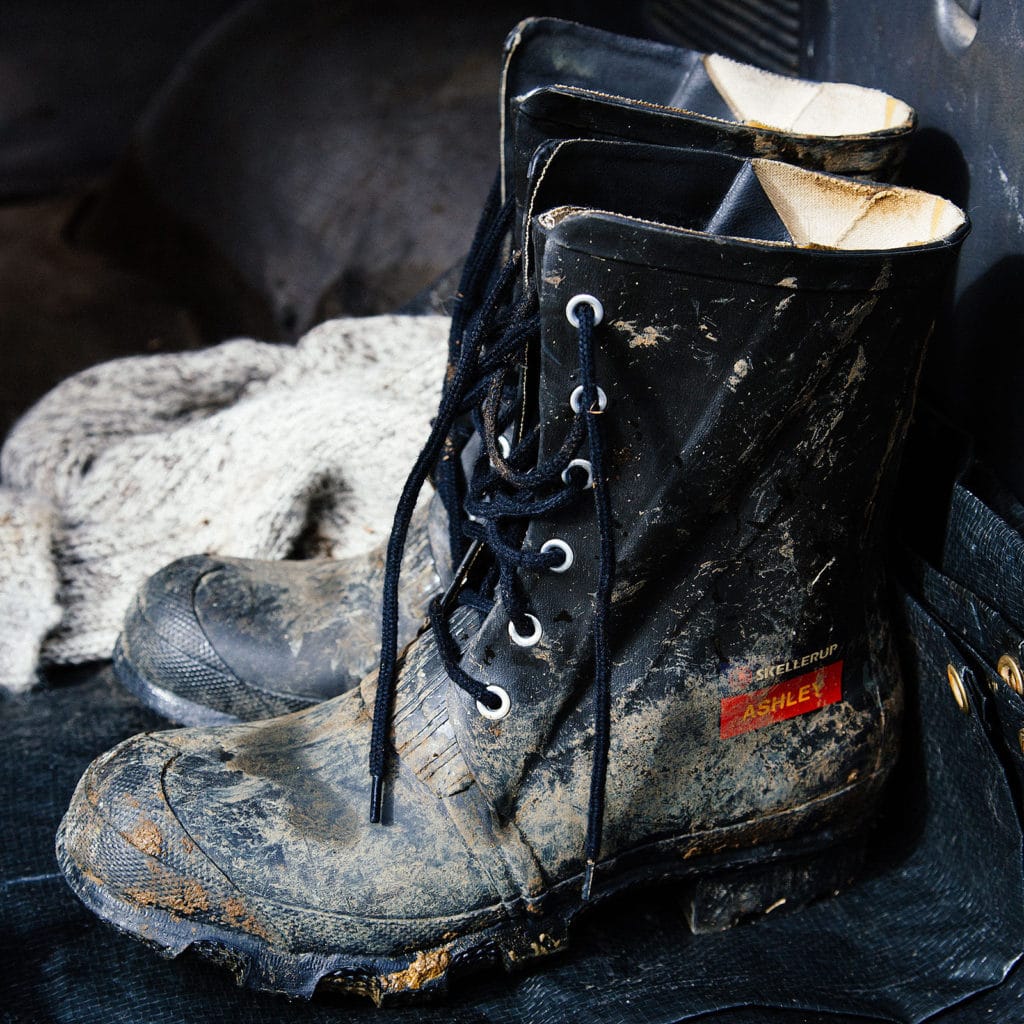Talk with any of the ‘old guys’ and they will happily tell you about their pair that lasted them 20 years and are still going strong. Numerous forum articles attest to the popularity of the boot.
In this series of articles, I am going to explore some of these Bush Legends: What made them so popular and are they still relevant today? First up. The Skellerup Ashley Boots.
Looking for a lighter boot
I was after a lighter weight option to my Meindl Makalu boots. When I first got the Makalu, I was after the biggest baddest boots I could find.
Now I will admit I am over carrying around what feels like 10kgs of boot on my feet all the time. I am certain, for alpine, South Island hunting, they would be excellent. For most of where I actually spend my time out in the bush, they are way over the top.
So. Lighter option it was.
Having recently joined the North Auckland Deerstalkers, I was able to start observing what some of the more experienced guys were wearing – and one boot that kept on popping up, both through observation and conversation was the Ashley. While it was a bit of a departure from what I was used to, I was also interested in what made these boots so popular.
The Build
The Skellerup Ashley is a Mid-calf length lace-up rubber boot with waterproof tongue gusset. It has a built-in rubber foam cushioned innersole and a calendered sole. Essentially, the Ashley is the high top version of the Buller Boot, another Skellerup option.
These boots are essentially laced up gumboots. Totally waterproof, fairly soft and somewhat bullet-proof. Their simplicity in design means there isn’t a lot to go wrong with them, and because they are all rubber and canvas (the liners) – you can pretty much take them off, hose them down and let them dry out – there isn’t much in the way of maintenance.
The Fit
Talking to a few hunters, some guys prefer the Ashley height, some the Buller. It seems to depend a bit on your feet. In fact, I know of several guys who will take an Ashley, then cut it down to their preferred height and you soon start to realise that ‘customising’ these boots is all part of their ownership.
I decided to get the higher Ashley – I am used to Hiking Boots – and prefer high tops. No real specific reason – it’s just what I tend to get. Part reason I guess was due to ankle support – and it should be noted – the Ashley (and the Buller) isn’t really going to do much in the way of supporting your ankles – they are too soft and loose – the fit being closer to a snug gumboot than a hikers boot.
This has both advantages and disadvantages. Advantageous in that it’s a really easy boot to take on and off, even leaving the laces undone, the boot becomes a great option if you need to quickly throw something on to go outside (when you want to put something on your feet when you wake up in the middle of the night and need a piss) and then you can all but kick them back off. Need them a bit more secure to go into the deep mud? Just tie up those laces and you are good to go.
Big Socks
One thing I did need to adapt too – was the need for some decent, thick woolly socks to wear under them. If you don’t wear thick, high socks, you are going to find two things –
Your foot is going to move a lot around in them.
Think gumboot. This isn’t generally an issue on the flat, nor on uphill, but start walking downhill and you might find, like me, that you start getting toe strike against the end of the toe box. I have had bruised toes from badly fitting boots before – so this is something I am acutely aware of. Even with the socks, I still find I am getting the occasional bang against my toes. This is something I don’t get in the Meindls, now most tramping boots – as the tight lacing on them holds the boot snug against your foot – minimising movement. The Ashley shifts. The reality being, it’s probably not the best choice for long walks in the mountains.
You need to be aware of chafing
 Especially when new, the inside of the Ashley can be a bit rough on the legs. So a high pair of socks is needed to act as a buffer between the abrasive inner, and you skin.
Especially when new, the inside of the Ashley can be a bit rough on the legs. So a high pair of socks is needed to act as a buffer between the abrasive inner, and you skin.
I have no doubt they will ‘soften’ with a bit of time, but big tall woollen socks are the go.
It’s also a great excuse to go buy some new socks. Fun fun fun.
How hot do they get?
Interestingly, not so much so. At least for me.
My current Meindls are hot. To the point where you only really need to wear boot liners (thin, thin socks) under them. Even then they tend to sweat. Because of the thick socks I was wearing with the Ashley I was a little concerned that it meant my feet were going to get uncomfortably hot.
I thought I was going to have two little sweat boxes on the end of my feet – but kicking around the Waitakeres in them, up a hill with a heavy pack, while I was certainly sweating, my feet were fine. This might have been different in the middle of summer, but in around 22 deg out, it wasn’t an issue. I think, due to the ‘loose’ fitting nature of these boots, you tend to get plenty of air moving around, keeping the feet well ventilated.I have heard people having the opposite issue – but sweaty feet has not be an issue in these.
On the other hand, I would probably be a little cautious about wearing these out into the cold. Or more correctly – I wouldn’t be expecting them to hold much more heat that your socks are going to. So no snow tramping in there for me. This is sort of what the Makalus are for anyhow, so no issue there for me. These boots are more for stalking around in the Bush with.
What’s the stealth mode like?
Really good. Because the boots are so soft, you tend to get more ‘ground feel’ with them. The soft soles are also a little less likely to snap everything underfoot – unlike the rock crushing steel shanked goodness of my Meindl Makalu. In addition, if you forget to wax them (because you don’t need to) – you are never going to get that leather creak that some boots are known for. It’s a running joke with some of the guys I tramp with now – my Meindls have a nasty habit of turning into frogs just when I need to be quiet. Wax fixes them – but after day two, when I have forgotten to pre-wax – it’s a little bit of a problem.
Stickyness – What is the grip like?
I have given the Ashley boots a good workout in the mud, over rock and root and would say they are on par with my Meindls. The nature of them is a little different.
The Meindls you can essentially bash through anything with – the sole doesn’t move. You need to think a little more with the Ashleys – and I have had a couple of decent ankle bangs on rocks when I forgot I didn’t have quite the same level of protection going on, but over most things they stick nicely.
With the Ashley you still need to be careful on slippery roots – but unless you start wearing crampons, that’s common across most bush footwear options.
Value
I think one of the big reasons for the Ashley getting so well established in the minds of hunters has been it’s price. At the moment, you are looking at about $150 for a pair of Ashleys and $120 for a pair of Bullers. This (like everything) has increased over the years, but for a long time, these boots were some of the best value for money options out there. These days, there are a few more options popping up – boots like the Boonies Kaimai are really direct competition.
So, any shortcoming I might have with these boots (mainly the loose fit) I temper with the fact they cost about a quarter the price of the boots I am comparing them too. Realistically, if I was on the flats – I would pick the Ashley Boot. Lighter, easier on the feet and quieter for stalking. More expensive is not always best.
Modifications and improvements
One thing that always pops up in conversations about Ashley (and Buller) boots are the modifications guys make to them to make them work a little bit better. I have already mentioned cutting down the tops to suit your own preferences, but another option that I am going to look into is punching drainage holes in the instep of the boot.
These boots are going to be used in the Bush, often worn while crossing stream and while totally waterproof, like all boots, they still have one large hole in the top of them – once the water gets in the there, you either stop and wring out the water, or you have two buckets on your feet.
A common modification is to push two small holes into each instep – essentially creating drainage holes for the water to get out of. This is also seen on jungle boots – and some guys will even get a small rivet installed into the boots to give a tidier finish. Yes, you have little holes in the boots now, but the amount of water that is going to get into them is a lot less that the amount of water that is going to get pushed out. Reports are that you will get a bit of a bilge operation going on – with footsteps pumping out water once you are back on dry land.
I am going to try the Ashly out with some decent gaiters, then try with this little mod.
Another common mods is cutting down the inside of the tongue in order to enable a tighter fit. Again, you slightly reduce the waterproofing of the boot, but gain a more snug fit. It will be something I also consider in the future.
I like pottering and tweaking things, so all this appeals to me.
In Summary
I will admit, I was a little hesitant going into this review. My current boots were/are expensive German designed super-boots, and I was worried I was going to end up with a pair of sloppy gumboots on my feet. In reality, I have found a relativity cheap, quiet, easy to maintain boot that I am going to have fun tweaking to suit my feet even more.
I think this is part of what has been responsible for the Ashley and Buller becoming part of the NZ Hunting heritage. it was cheap, easy to look after, and you could fix it with a piece of ‘number eight wire’.
Sure, there are more modern designs out there – but for a cheap, functional option – they are hard to beat!





